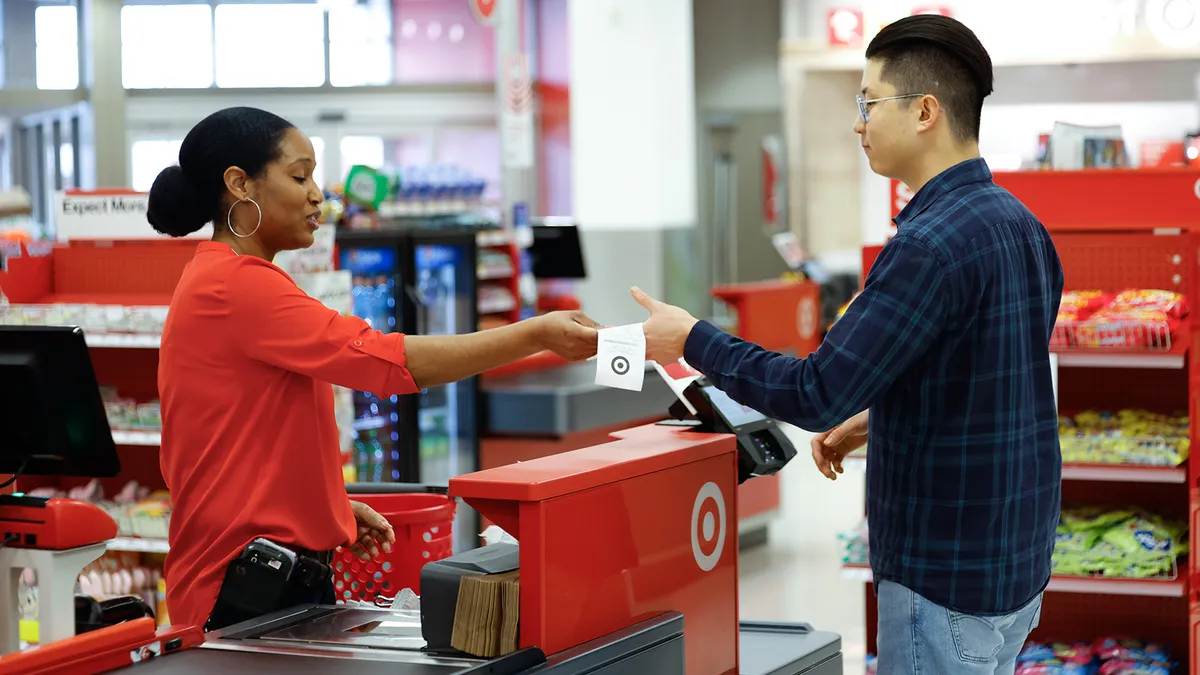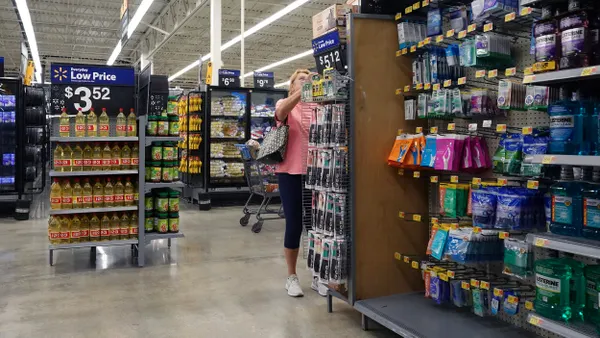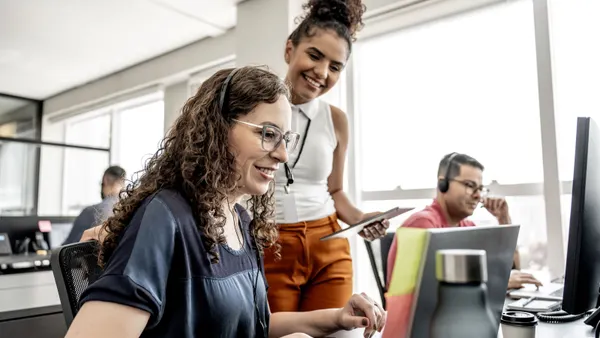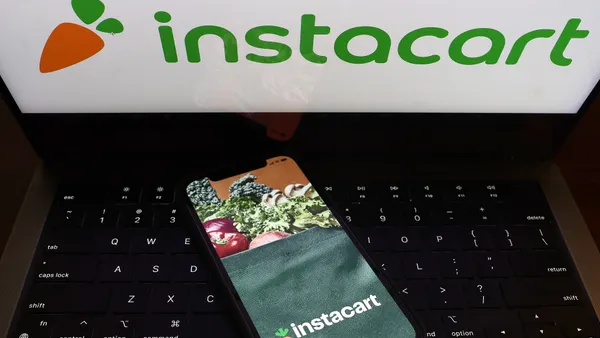Dive Brief:
- Target says its express self-checkout lanes, which limit customers to 10 or fewer items, have increased satisfaction and sped up the checkout experience. Since rolling out in March 2024, the express self-checkout lanes reduced average transaction times across self-checkout and staffed lanes by nearly 8%, the company said in a blog post Monday.
- The retailer’s net promoter score for wait times across checkout is up 5 points, while the NPS for interactions rose 3 points since Target implemented the change.
- More customers are choosing Target’s fully staffed registers, according to the company. Target has invested in staff training alongside the express lanes to improve the overall checkout experience.
Dive Insight:
Target’s self-checkout limits, along with other improvements to the retailer’s checkout experience, have “been a great success,” the company wrote in its blog post.
Target changed its approach to staffed checkout queues as well. Store managers gained greater control over the ratio of cashiers to self-checkout lanes throughout the day, with the goal of increasing self-checkout availability during the busiest periods.
Experts have warned about the dangers of cutting down staff to focus on automated checkout options and other in-store technology. While customers appreciate self-service options, they also don’t eliminate the need for associates.
Ikea, like Target, has kept associates top of mind in its self-checkout plans. When the company rolled out Upptäcka self-service kiosks in its stores last June, one of the key benefits of the strategy was letting workers spend more time on customer interactions rather than operating registers.
Other retailers reduced their reliance on self-checkout altogether last year. Walmart removed self-checkout kiosks from certain locations based on feedback from employees and customers, while Dollar General eliminated the “vast majority” of its self-checkout lanes to reduce theft and drive greater customer engagement.










